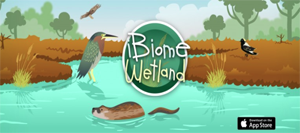 There is no doubt that students who enter our classrooms are consumers of technology. They are most often using their phones to download apps to play games and communicate with other students (and sometimes their parents) through texting. If they need to know something, then that information is just a search away. The bottom line is that the idea of staying connected is such a central part of their lives that they cannot fathom what it would be like to not have that type of access. Our job as teachers is to help our students harness technology resources as a means of communicating what they are learning.
There is no doubt that students who enter our classrooms are consumers of technology. They are most often using their phones to download apps to play games and communicate with other students (and sometimes their parents) through texting. If they need to know something, then that information is just a search away. The bottom line is that the idea of staying connected is such a central part of their lives that they cannot fathom what it would be like to not have that type of access. Our job as teachers is to help our students harness technology resources as a means of communicating what they are learning.
Over the past 20 years or so, educators have pushed for meaningful integration of technology into classrooms. A major challenge for us is to decide what that meaningful integration should look like. Is it simply reading information online? Is it taking notes about what we learned by word processing? Is it creating a slideshow or podcast that shares that information? Is it drawing pictures to represent key ideas (and the list goes on)? Our answer to all these questions is yes! What brings this answer to light in the classroom would be intentional planning and careful consideration of the required skills we want students to own by the end of the process, which then makes it possible to integrate technology in meaningful ways. By asking our students to read and evaluate information, write down key evidence, and respond and create as a means of sharing new knowledge, we are providing them with the opportunity to research, record, and report about what they have learned. In this column, we share with you a possibility in which technology can be integrated into science and English language arts (ELA) teaching and learning activities. Enjoy!
Studying the wetland biome
This example illustrates how technology can be integrated into a science unit on biomes. Student exploration of the wetland biome provides numerous opportunities for reinforcing ELA skills, especially Common Core State Standards Speaking and Listening Standards, Writing Standards, and Reading: Informational Text Standards.
Research!
Begin a study of the wetland biome by using the iBiome app. This app supports students as they gather information about the wetland habitat, research species that live in the wetland, investigate marshes, and create an environment where plants and animals flourish. As students explore iBiome, they can be specifically charged with defining what is meant by a wetland as well as describing key features and characteristics.

Students can also view a video about types of wetlands at UntamedScience. This video gives an overview of a wetland as well as a description of types of wetlands. Add in a review of wetland information at the National Center for Ecological Analysis and Synthesis (NCEAS), and students now have multiple sources to locate information about this particular biome.
Record!
As they explore the iBiome app, the Untamed Science video, and the NCEAS website, students could record their new knowledge by using Popplet. This Cloud-based software enables students to create a concept map that details what they are learning about the wetland biome. The concept of teamwork could be promoted by having students work in groups to explore various types of wetland biomes (e.g., marsh, swamp, bog, fen), types of animals, or types of plants. Groups could also be tasked with recording more about what they learned by downloading pictures of their designated focus (i.e., types of wetlands, animals, or plants), inserting the pictures into a PowerPoint slide, then adding text box labels to identify key parts of each picture as it relates to their topic. Last, students could word process a script that describes what is included in their slide and use Audacity to create a podcast recording of what they learned.
Report!
Once the slide is completed, it could be saved as in .jpg format and imported into a class site on Glogster that shares each group’s work. Once students add their podcast to their Glogster slide, your class will have a Glogster site that shares what they have learned about the wetland biome. Wrap up this biome exploration by having each group orally present their findings to the rest of the class.
Although we have posed this idea using a science focus, this same triad of research, record, and report is effective within any content area. This three-part process enables students to be critical consumers of technology and of all that it offers. It can be used for both short-term and long-term research projects and allows students to use technology as a means to a robust end rather than simply the end being the entertainment of the technology itself. It requires students to engage in the process of rigorous reading and writing and gives them an authentic scholarly route with which to use their “native technology” skills.

Kimberly Kimbell-Lopez is a professor in the Department of Curriculum, Instruction, and Leadership in the College of Education at Louisiana Tech University. She has been an educator for over 25 years, and her areas of expertise include literacy and technology. She can be contacted via e-mail at kkopez@latech.edu.

Carrice Cummins is a professor in the Department of Curriculum, Instruction, and Leadership in the College of Education at Louisiana Tech University. She has 40 years’ experience as an educator with primary areas of interest in comprehension, content area literacy, and teacher development. She served as the 2012–2013 president of the International Reading Association. She can be contacted via e-mail at carrice@latech.edu.

Elizabeth Manning is an assistant professor in the Department of Curriculum, Instruction, and Leadership in the College of Education at Louisiana Tech University. A veteran K–8 teacher of over 25 years, her areas of interest include content area literacy, writing workshop, and curriculum design and development. Dr. Manning can be contacted via e-mail at lmanning@latech.edu.
This article is part of a series from the Technology in Literacy Education Special Interest Group (TILE-SIG).